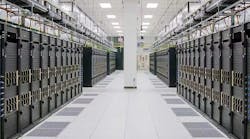Google has been building bigger data centers for more than a decade. But it’s about to turn the dial up to 11.
The company is ramping up its data center capacity, with plans to add 12 new compute regions for Google Cloud Platform over the next year.
The expansion, announced today ahead of Google’s GCPNEXT 2016 user conference, is meant to help Google’s cloud compete with Amazon Web Services and Microsoft Azure.
“We’re opening these new regions to help Cloud Platform customers deploy services and applications nearer to their own customers, for lower latency and greater responsiveness,” said Varun Sakalkar, product manager for Google Cloud Platform. “With these new regions, even more applications become candidates to run on Cloud Platform.”
The rapid growth of cloud computing has spurred a building boom for the major Internet platforms, as Google, Microsoft, Amazon and Facebook are all super-sizing their cloud campuses to add data center capacity. Meanwhile, developers of third-party data center space are also scaling up their operations so they can lease space to cloud builders.
Building Upon An Already Huge Footprint
What does a major cloud expansion look like for Google? It already is investing heavily on data centers. The company spent nearly $11 billion on servers and data centers in 2015, and announced new locations for data center campuses in Alabama and Tennessee, reflecting a distinctive focus on the Southeast. Google also continues to add capacity at its existing campuses, a strategy that will likely accelerate as it adds cloud computing regions.
Steam rises from cooling towers at a pair of Google data centers on the company’s campus in The Dalles, Oregon, where it will be adding capacity to support Google Cloud Platform. (Image: Google)
Case in point: This week Google said it will invest an additional $600 million to expand its data center operations in The Dalles, Oregon, where the company built its first data center in 2006. Google will create a second campus in The Dalles on a 23-acre property about a mile from its existing campus, which houses three large data centers. The new campus will push Google’s investment in its Oregon operations to nearly $2 billion.
That expansion will support a new region for Google Cloud Platform. Oregon was one of two sites identified for new regions, along with Tokyo, Japan.
The Strategic Importance of New Regions
The emphasis on cloud regions is something of a shift for Google. Amazon Web Services operates 12 regions globally, while Microsoft has 22 and expects to expand to 28 this year. By comparison, Google Cloud Platform has four regions:
- Central US: Council Bluffs, Iowa
- Eastern US: Berkeley County, South Carolina (north of Charleston)
- Western Europe: St. Ghislain, Belgium
- Eastern Asia: Changhua County, Taiwan
Each region includes at least three zones, which help customers configure their cloud operations for resiliency. Zones allow customers to run instances in several isolated locations to avoid a single point of failure. If customers distribute instances and data across multiple zones, the application can be designed to shift to an instance in another zone.
Regions are becoming more important for global cloud growth, as surveillance controversies have sharpened the focus on data sovereignty and customer privacy. As more countries seek to keep citizens’ data within their borders, cloud providers are adding data centers in these markets to accommodate these demands.
Expansions of Current Sites, But Also New Campuses
The expansion announcement highlights the importance of Google’s cloud campuses. The company can add cloud regions by expanding capacity on some of its existing campuses – as it is doing in Oregon – but it may also require entirely new campuses in additional locations.
An overhead view of rows of servers inside the Google data center in Council Bluffs, Iowa, which houses capacity for Google Cloud Platform. (Photo: Google)
Cloud campuses are the sites where technology titans concentrate massive amounts of computing power in multiple data center facilities. These huge campuses are where the cloud lives – the physical manifestation of the Internet, often located in rural areas offering cheap land and power. Data center hubs enable companies to rapidly add server capacity and electric power, creating economies of scale as more workloads migrate into these massive server farms.
As cloud computing gains momentum – driven by social networks, Big Data and the Internet of Things – the scale of these facilities will grow ever larger. That’s what we’re seeing with Google’s announcement today.
It’s not a coincidence that Google’s largest U.S. cloud campuses are the ones in Iowa and South Carolina, which both house regions for Google Compute Engine. Google’s focus on latency suggests it may add capacity at additional U.S. campuses, as well as the new sites in Alabama and Tennessee. On the global front, Google told Bloomberg that it may use a combination of company-built data centers and facilities leased from third parties.
What’s clear is that cloud growth is driving phenomenal demand for additional data center capacity, a trend that could continue for some time to come.






